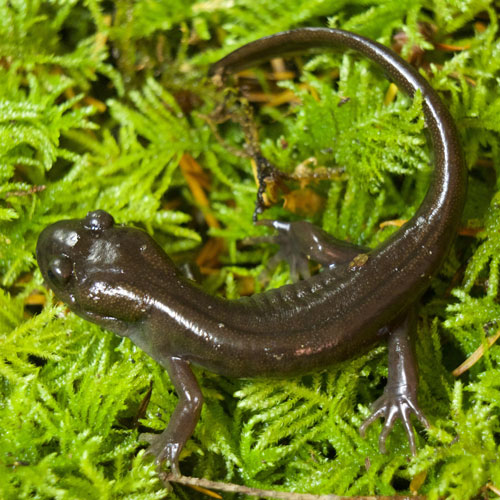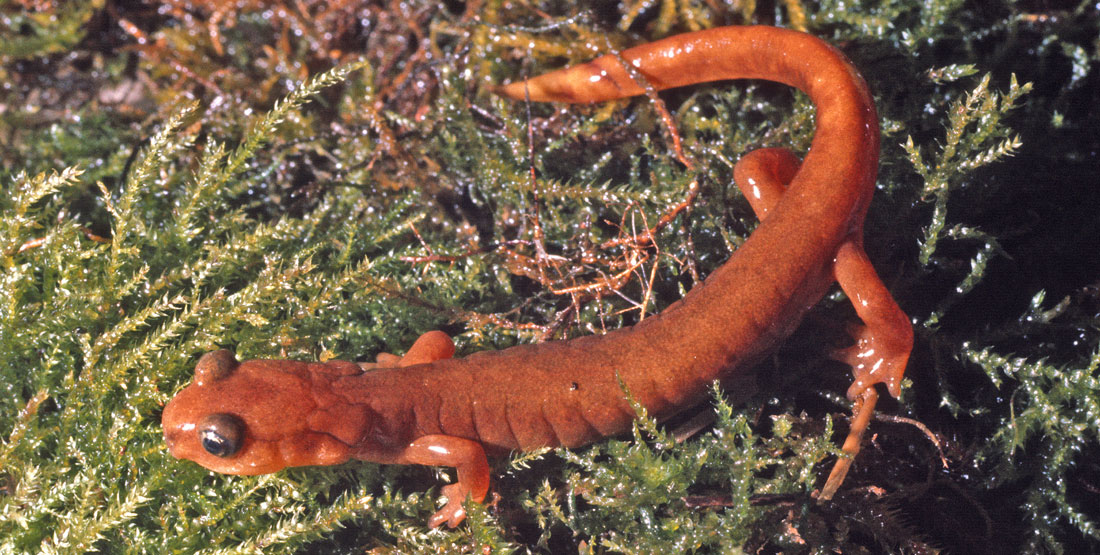Fast Facts
Where they live
- View a map of where they live.
- Are only found in Washington State in the Olympic Mountains, southern Cascade Mountains and Willapa Hills area.
- Prefer the sides of streams under rocks and rotting logs in mountain forests.
- Can be found in open unforested areas if sufficiently damp and are common in cave openings under rocks.
Breeding
- Breeding season and egg laying is in Spring and eggs usually hatch by fall.
- Female guards the eggs until hatching.
- Do not have an aquatic larval stage; they hatch straight into small fully formed salamanders.
Cool Biology Facts
- The color differences might be associated with different levels of elevation and temperature.
- Live in scattered isolated populations.
Threats
- They are extremely sensitive to habitat changes due to logging. They currently are in two protected areas: Olympic National Park and Mt. St. Helens National Monument. View their status on the IUCN Red List of Threatened Species.

Amphibians & Reptiles of Washington
Do you know where rattlesnakes live in our state? Or which salamander breathes through its skin? Explore the fascinating diversity of the 26 species of amphibians and 28 reptiles found in Washington state.

